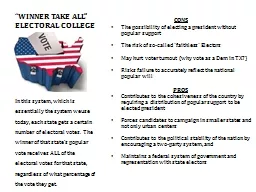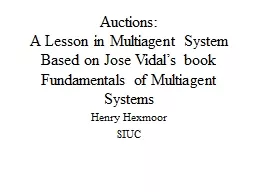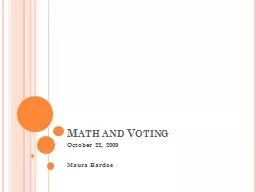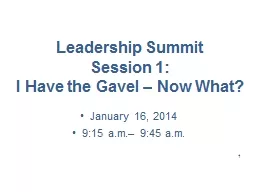PPT-“WINNER TAKE ALL”
Author : min-jolicoeur | Published Date : 2016-04-12
ELECTORAL COLLEGE CONS T he possibility of electing a president without popular support T he risk of socalled faithless Electors May hurt voter turnout why vote
Presentation Embed Code
Download Presentation
Download Presentation The PPT/PDF document "“WINNER TAKE ALL”" is the property of its rightful owner. Permission is granted to download and print the materials on this website for personal, non-commercial use only, and to display it on your personal computer provided you do not modify the materials and that you retain all copyright notices contained in the materials. By downloading content from our website, you accept the terms of this agreement.
“WINNER TAKE ALL”: Transcript
Download Rules Of Document
"“WINNER TAKE ALL”"The content belongs to its owner. You may download and print it for personal use, without modification, and keep all copyright notices. By downloading, you agree to these terms.
Related Documents














